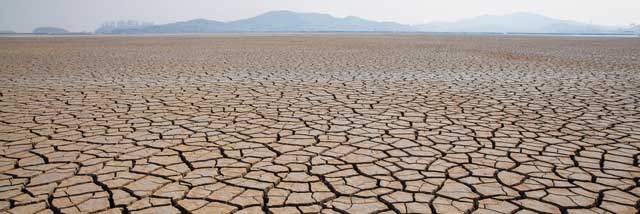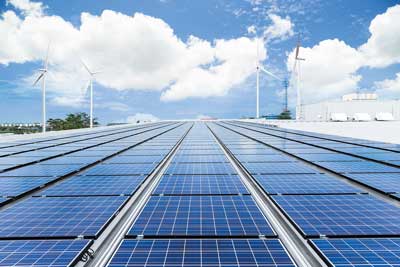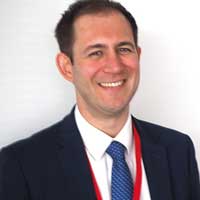
How to rise to the challenge of climate change was the subject of a roundtable discussion at a recent meeting of the M&E Editorial Advisory Board. David Fowler reports
In May this year the House of Commons declared an environment and climate change emergency. Though the motion it approved does not compel the government to act, the event was nevertheless hailed as a major step forward in recognising reality. The following month the government enshrined in law a commitment to achieving net zero carbon emissions by 2050.
A week after Parliament’s declaration, Bosch announced it would be carbon neutral by 2020 (News, M&E May/June 2019). Will other big industrial concerns to follow its lead? How should industry respond to the crisis? This was the subject of a roundtable debate at the second meeting of M&E’s editorial board.
Dr John Ahmet Erkoyuncu, director of the Through-Life Engineering Services Centre at Cranfield University, said the recent BBC David Attenborough documentary showed “how grim things are environmentally”. He asked: “What are we really doing in our sector, maintenance, asset management? Do we know what the carbon footprint is for maintenance?”

‘There’s a whole issue about how you define embedded carbon and operational carbon…’
Dr Peter Geake,
Jacobs
Dr Peter Geake, technical director for asset and enterprise risk management at consultant Jacobs, added: “There’s a whole issue about how you define embedded carbon and operational carbon and how you monetarise that to make the right decision, because classical discounting processes don’t work too well.” There was an argument for “upcounting” – “where normally over time you depreciate money, you could argue that if you want to capture carbon, you should increase the asset’s value.” A company might believe it was carbon neutral operationally, but taking into account embedded carbon might overturn the calculations.
Another question in defining carbon was “how far down the supply chain do you go and say that’s associated with the product?”
DAK Consulting director Dennis McCarthy pointed to the 17 Sustainability Development Goals based on the Paris climate accord, which defined areas for action on the environment.
Dr Erkoyuncu asked whether there were incentives for companies to think about the environment: “The impression I have is it’s about cost versus performance – we’re not thinking of the environmental impact. How do we make the environment an attribute in decision making?”
Steve Johnson, vice-president of digital for Petrofac’s engineering and production services business, said recent developments had put pressure on boards and shareholders, but added that there was a danger of it becoming a passing phase. “How do you get to the position where, like health and safety, it’s a constant value?”

‘How do you get to the position where, like health and safety, the environment is a constant value?’
Steve Johnson,
Petrofac
Mr McCarthy said “It’s got to be good business sense to use less of stuff.” In principle, the Sustainability Development Goals were designed to lead to a 2% annual drop in carbon emissions globally.
He said that a global company he had worked with saved €14m by monitoring power use more closely. “The maintenance department was given the energy budget, and that changed the approach from ‘if it ain’t broke don’t fix it’ to optimising plant to use less energy. So if a motor rewind is cheaper, but a new high tech motor that uses less power pays for itself in about two months, what would you do?”
Dr Geake said: “We were involved in a project with pump manufacturers using Amulet to monitor the behaviour of plant, and the amount of times they had pumps running when they shouldn’t have been, or operating them off the efficiency curve was not that unusual…”
Mr McCarthy said that in areas such as improving energy consumption, productivity, and resource management there were a lot of easy successes to be had which also engaged staff in the project.
Dr Erkoyuncu suggested that “effectiveness in the strategic sense” – the question “do I need to do this?” – might yield even bigger savings.
He gave the example of a company which bought 30 years’ worth of spares, which then had to be stored at a certain temperature to stop them degrading. “After three years they upgraded the system and didn’t need the parts any more. So we also need to think of through-life effectiveness.”
Mr Johnson said that to have a transformative impact “you need some early wins”. The examples mentioned earlier were good for the companies concerned, made business sense and drew people in at different levels. “You’ve got to start in areas where people will buy in.”
Dr Erkoyuncu asked: “If there’s a climate change emergency, what can we do urgently?”

‘It’s got to be good business sense to use less stuff’
Dennis McCarthy,
DAK Consulting
Mr McCarthy said that the Sustainability Development Goals set out that carbon dioxide emissions should no longer be increasing by 2030. There is a growing consensus that this target is not going to be achieved. “So in that sense it is an emergency. The implication is that if it doesn’t happen through industry doing it then there’ll be legislation.”
He added that in France there was a legal requirement for companies to map their strategic goals to the Sustainability Development Goals. Pernod Ricard, the drinks manufacturer, had undertaken this exercise for the whole value chain and set goals. They had held internal conferences where they talked to staff about how they could help the company meet the goals. “I thought what a great thing to do – you’re providing a global link to say this is what the company’s doing, this is your role.”
There was general agreement that the target would not be reached without government-level intervention. Dr Erkoyuncu suggested some sort of tax reduction or other incentive might be needed.

Mr Johnson added that a process had been demonstrated which could turn plastics back to hydrocarbons. Instead of plastic waste being shipped to places such as Thailand for processing, he said, “the government could put regulations in to say we will recycle our own plastic waste – we’d create industry, we’d reduce the need to look for other hydrocarbons, and the waste wouldn’t end up in the sea. But, again, I don’t see it happening without regulation.”
Mr McCarthy said that engineers in industry could take the initiative by considering how to reduce energy use and developing a plan. He added: “We did some work with BP where they were able to far exceed emission targets by just making sure the equipment was maintained and looked after effectively.”
Mr Johnson said: “The just-in-time supply network creates the need to transport components around the world. Can you use technology such as 3D printing to bring some of that back locally to the point of manufacture?”
Dr Geake said this came back to the point about accounting for the whole carbon chain. It might be the case that it was simply more efficient to make a given component in a certain part of the world.

‘We urgently need to create an incentive for companies to take climate change seriously.’
Dr John Ahmet Erkoyuncu,
Cranfield University
Dr Erkoyuncu asked about looking at complex equipment or assets such as buildings from a through-life perspective. “At the moment asset management contracts are usually five or six years. So we think of those five years, not the through-life implications. It has an impact environmentally.”
Mr McCarthy said: “The TPM perspective is to extend useful asset life. That includes upgrading to take advantage of new technology.”
He described a project in which new electronics had been successfully retrofitted to an old machine. “It worked fine because the quality of the build was great.” This led him to question the common view that an asset will only last a set number of years: “There is value in retrofitting legacy assets to get the most out of them rather than buying new. It makes the most of precious investment and reduces levels of ‘stranded carbon’, caused by the disposal of assets before the end of their useful life.”
Dr Erkoyuncu asked for views on whether the infrastructure and facilities available for operations, maintenance, and asset management were adequate.
Mr Johnson said: “At the moment, businesses tend to evaluate investment on a purely financial basis and for many, the benefit of technology is not there in the eyes of the organisation.” He added: “No conversation happens about ‘the benefit from that is we’ll reduce our carbon footprint’. That doesn’t appear on the balance sheet.”
Dr Geake said: “How do you bring in carbon accounting to our accounting processes? A parallel is the fair value accounting system, where you can’t just assume a life of an asset, you have to relate it to a business life or useful life. You can’t depreciate things too fast. That approach has changed a lot of companies’ behaviour, and it’s that sort of change we need, to parallel that.”
He added that the enterprise view should be to ask “what’s the key way to act, as a business, to mitigate the risk to my reputation in terms of managing carbon? So it’s no longer what it costs me, it’s the way I manage a key risk and report on it.”
Summing up, Dr Erkoyuncu said: “There isn’t a single solution. There are lots of things that need to be done. One is this commercial balance: we urgently need to create an opportunity, an incentive for companies to take climate change seriously, and I don’t think we’ve got that right at the moment. Without that companies aren’t going to push forward.”

